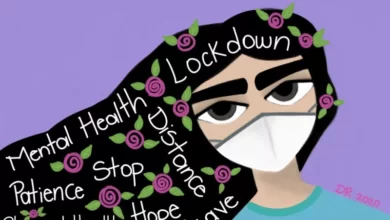Blockchain Technology and Its Potential Applications in Education

Blockchain technology has been making waves across various industries in recent years. From finance to healthcare, blockchain is revolutionizing how businesses operate and how transactions are made. However, its potential applications in education are also being explored. In this article, we will delve into what blockchain technology is, its benefits, and its potential applications in education.
What is Blockchain Technology?
Blockchain technology is a decentralized digital ledger that records transactions on multiple computers in a secure and transparent way. The technology uses cryptography to ensure the security and integrity of data. This means that once data is recorded on the blockchain, it cannot be altered or deleted without the consensus of all parties involved.
Benefits of Blockchain Technology
The benefits of blockchain technology are numerous. Here are a few of the most significant:
Decentralization
Blockchain technology operates on a decentralized network, meaning that there is no single entity controlling the data. This enhances transparency and reduces the risk of fraud, making it ideal for use in various industries.
Security
As mentioned earlier, blockchain technology uses cryptography to secure data. This ensures that data is tamper-proof, making it an ideal solution for storing sensitive information such as financial records and personal data.
Transparency
Blockchain technology provides a transparent record of all transactions, making it easier to track and verify the authenticity of data.
Efficiency
Blockchain technology reduces the need for intermediaries in transactions, making processes more efficient and cost-effective.
Potential Applications of Blockchain Technology in Education
While blockchain technology is still in its infancy in the education sector, its potential applications are vast. Here are a few areas where blockchain technology could be used in education:
Credentialing
One potential application of blockchain technology in education is credentialing. Blockchain technology could be used to create a secure, decentralized database of student records, including diplomas, transcripts, and certificates. This would eliminate the need for third-party verification, making the process more efficient and cost-effective.
Student Data Management
Another potential application of blockchain technology in education is student data management. Blockchain technology could be used to create a secure and transparent database of student data, including attendance records, grades, and performance assessments. This would enable teachers and administrators to access student data in real-time, providing them with a better understanding of each student’s needs.
Digital Textbooks
Blockchain technology could also be used to create a decentralized database of digital textbooks. This would enable students to access textbooks from anywhere, at any time, without the need for physical copies. Additionally, this would enable publishers to ensure that textbooks are authentic, reducing the risk of piracy.
Micro-Credentials and Badges
Blockchain technology could be used to create micro-credentials and badges. Micro-credentials and badges are digital certificates that recognize skills and achievements that students acquire outside of traditional coursework. By using blockchain technology to create these credentials, students would have a secure and portable way of showcasing their skills and achievements to potential employers.
Blockchain Technology and Student Privacy
Blockchain technology offers a high level of security and transparency, making it an ideal solution for protecting student data privacy. By using blockchain, schools and universities can create a decentralized database of student information, which can only be accessed with the consent of the student or their authorized party. This can help prevent unauthorized access to sensitive information, such as grades and attendance records.
Blockchain Technology and Student Mobility
With the rise of globalization, student mobility has become increasingly important. However, traditional methods of verifying student credentials can be time-consuming and costly. Blockchain technology offers a solution to this problem by creating a secure and portable database of student credentials. This would enable students to easily share their credentials with potential employers and academic institutions, regardless of their location.
Blockchain Technology and Online Learning
Online learning has become increasingly popular in recent years, but it also poses unique challenges, such as verifying student identities and preventing cheating. Blockchain technology could be used to address these challenges by creating a secure and transparent record of student identities and academic achievements. This would enable educators to verify the identity of students and ensure the integrity of online assessments.
Blockchain Technology and Intellectual Property
Intellectual property is a critical issue in education, particularly in areas such as research and academic publications. Blockchain technology can be used to create a decentralized database of intellectual property, ensuring that the original creator of the work is recognized and compensated appropriately. This could also help reduce the incidence of plagiarism and academic fraud.
Blockchain Technology and Funding
Blockchain technology can also be used to track and manage funding in education. By creating a transparent and decentralized database of funding sources and expenditures, educators and administrators can ensure that funding is distributed equitably and effectively.



